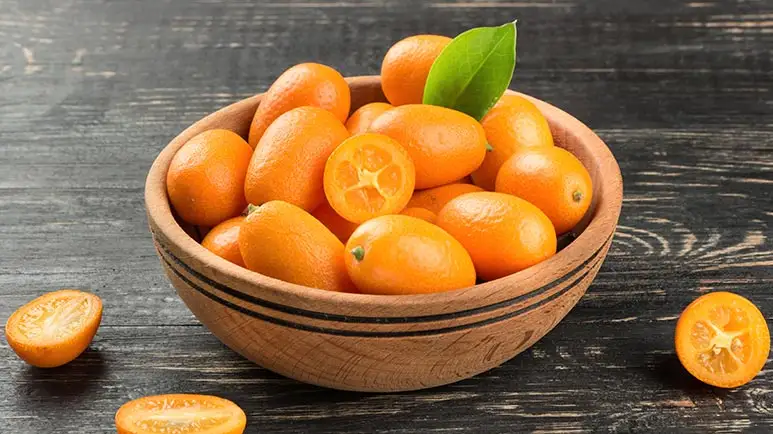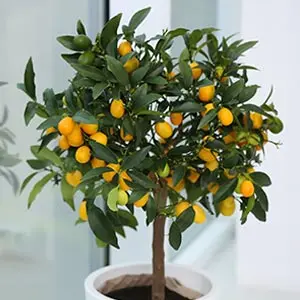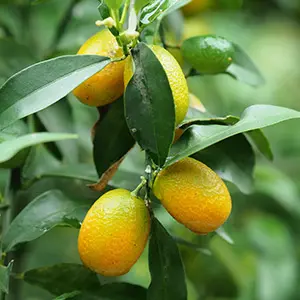Kumquats: Can This Small Citrus Supercharge Your Pet's Health?
Feeding these small, sweet-sour fruits to your pet may help ward off chronic diseases and keep them from gaining unwanted pounds, but are they 100% OK for companion animals? Here’s what you should know when sharing this food with them.

STORY AT-A-GLANCE
- Kumquats are the smallest member of the citrus family, and they’re native to East Asia, China in particular
- One of the standout flavonoids in kumquats is apigenin, which is known for its antioxidant potential that may help your pet overcome and avoid oxidative stress and chronic diseases
- Ethanol and flavonoids in kumquats may help control body weight gain. A separate study also found that poncirin, a flavonoid found in kumquats, may also play a role by helping minimize fat cell growth, thereby regulating fat cells
- Kumquats also offer different vitamins and minerals, including vitamins C and beta-carotene (vitamin A precursor), calcium and phosphorus
Editor's Note: This article is a reprint. It was originally published January 25, 2024.
If you’ve never tasted kumquats (Citrus japonica) before, you’re in for a pleasant surprise. These oval-shaped citrus fruits appear like tiny oranges, just about the size of a grape or olive, and have a soft, sweet skin, a slightly bitter flesh and tart juice.1 They’re very versatile, and are usually added to relishes and sauces, salads or even as an ingredient in pastries. Kumquats can also be used to make delicious jams and marmalades.
If you’re thinking of adding this fruit to your pet’s meals for diversity and added nutrients, you’re in luck. Kumquats are safe to share with dogs and cats (if they’ll eat them), as long as they’re given in moderation. Here’s what you need to know about kumquats.
What Are Kumquats and What Benefits Can They Offer Pets?
Kumquats are the smallest member of the citrus fruit family. They grow on small trees measuring 8 to 12 feet tall,2,3 and are native to East Asia, China in particular. In fact, its name is of Chinese origin, and came from the word “cumquat” or “comquot,” which means “gold orange.” Kumquats are the only citrus fruit that can be eaten whole, skin and all, and there are several varieties available today:4
- Meiwa kumquat (round kumquat) — They’re known to be sweeter than other varieties and have a golden-orange color.
- Nagami kumquat (oval kumquat) — Its peel is bright orange and it has a sweet tart flavor that makes it perfect for marmalades. This variety is common in the U.S.
- Centennial variegated kumquat — This Nagami hybrid has pale yellow and dark green stripes and is larger, with an oval-shape.
- Jiangsu kumquat — A unique, bell-shaped variety with a milder flavor than others.
- Fukushu kumquat — Larger than other varieties, as it’s a hybrid of kumquat and mandarin. It has a flattened round shape and smooth rind.
- Mandarinquat — This cross between a kumquat and a mandarin has a similar appearance to tangelos.
- Limequat — A cross between kumquat and key lime, it has a sour flavor and a smooth, light yellow rind.
Kumquats offer different vitamins and minerals, including vitamins C and beta-carotene (vitamin A precursor), calcium and phosphorus. It also offers flavonoids and antioxidants that can have various effects on your wellbeing.5
Did You Know?

In China and other Asian countries, kumquats are a symbol of good fortune. It’s typical to find a kumquat tree in many households and, during the Lunar New Year, they are given as gifts to friends and loved ones.6
Kumquats Contain Inflammation-Fighting Apigenin
One of the standout flavonoids in kumquats is apigenin, a flavone also found in foods like artichokes, rutabaga and green tea,7 and is known for its antioxidant potential that may help your pet overcome and avoid oxidative stress and chronic diseases.8 Some preclinical trials have suggested that it may help improve brain function,9 anxiety,10 inflammation11 and hormone regulation.12
One study on beagles found that a combination of apigenin K and melatonin helped increase new bone formation when applied topically. The researchers noted that:13
“[M]elatonin and apigenin K can accelerate the process of mineralization of the bone matrix, and thus the creation of laminae in the early stages of healing (one month). Less reabsorption of the post-extraction sockets can be expected with the topical application of melatonin and apigenin K. It seems that the stimulatory effects of bone healing induced by the topical application of melatonin and apigenin K are defect-size-dependent, being more evident in small defects compared to larger defects.”
Another study, also conducted on canines, found that certain flavonoids, including apigenin, demonstrated cytotoxic activity against cancer cells, highlighting their potential to be used for cancer therapies. The researchers noted:14
“Apigenin, luteolin, trans-chalcone and 4-methoxychalcone showed the highest degree of cytotoxicity in the absence of considerable DNA damage, whereas genistein exhibited low cytotoxicity but induced a high level of DNA damage …
The results of this study raise the possibility of exploring flavonoids for anticancer therapies in dogs, as well as in humans, in view of their lower toxicity when compared to other drugs.”
Kumquat Production in the U.S.

California and Florida are the primary producers of kumquats in the U.S., though Texas and Louisiana also cultivate this fruit, albeit on a smaller scale.15

Kumquats May Help Avoid Obesity and Support Immune Function
With 59% of dogs and 61% of cats today struggling with obesity, it’s important to take proper measures to help manage your pet’s weight.16 And according to animal studies, kumquats may be one food that may provide this benefit.
One study found that the extract from kumquats contain ethanol and flavonoids that may help control body weight gain, as well as other factors associated with it. The researchers noted that kumquat extract may be a “potential dietary supplement for preventing and ameliorating the obesity and obesity-related metabolic disturbances.”17 A separate study also found that poncirin, a flavonoid found in kumquats, may also play a role by helping minimize fat cell growth, thereby regulating fat cells.18
Another interesting research about kumquat extract is its potential to help boost immunity by activating natural killer (NK) cells, thanks to its carotenoids, such as beta-cryptoxanthin. According to 2011 research on mice, having reduced NK activity is associated with certain infectious diseases and cancer, and oral intake of this fruit extract activates NK cells in vitro and in vivo.19
Are Kumquats Sustainable?

The environmental impact of kumquat production is quite low, with a low water and carbon footprint. In the U.S., it’s a niche crop, so its effect on the environment is minimal. However, because it’s a niche fruit, it may be hard to find organic, spray-free versions. If you happen to see organic kumquats in your local farmers markets, don’t pass them up!20,21
How to Share Kumquats with Your Pets
Misinformation about many healthy fruits, vegetables, nuts and seeds abounds on the internet. This is because websites have labeled all risks (such as the risk of overconsumption causing gastrointestinal issues, or choking on too large of pieces or pits) as "toxicities," which isn't true but has managed to confuse millions of pet lovers, nonetheless.
In the case of kumquats, many pet websites warn that citrus fruits, in general, can be toxic to pets due to the rinds containing essential oils. The peel contains most of the essential oils that many websites warn could be “toxic” to pets.22 If you’re eating this fruit for yourself, you can consume it whole, but when sharing it with pets, removing the peel and the small seeds is ideal.
Most pets, especially cats, aren’t interested in eating any type of citrus, but if your pet shows an interest in kumquats, chop the peeled fruit into small pieces prior to feeding. You can also incorporate this fruit into healthy treats you make — just make sure that these treats only make up 10% of their daily caloric intake.
Sources and References
- 1 Food Network. January 19, 2023
- 2,4 Masterclass, September 29, 2021
- 3 Britannica, Kumquat
- 5 Foods. 2019 May; 8(5): 166
- 6,15 Specialty Produce, Kumquats
- 7 Examine, Apigenin
- 8 Journal of Food Biochemistry, Volume 46, Issue 4, September 26, 2021
- 9 Basic Clin Neurosci. 2021 May-Jun;12(3):383-394
- 10 Planta Med. 1995 Jun;61(3):213-6
- 11 Microcirculation. 1996 Sep;3(3):279-86
- 12 Neoplasia. 2006 Nov;8(11):896-904
- 13 Appl. Sci. 2020, 10(9), 3006
- 14 Molecules. 2013 Dec; 18(12): 15448–15463
- 16 Association for Pet Obesity Prevention
- 17 PLoS One. 2014 Apr 4;9(4):e93510
- 18 Eur J Pharmacol. 2011 Aug 16;664(1-3):54-9
- 19 Biosci Biotechnol Biochem. 2015;79(8):1327-36
- 20 FoodPrint, Real Food Encyclopedia, Kumquats
- 21 Heal Label, October 3, 2022
- 22 Dog Time, March 31, 2022











